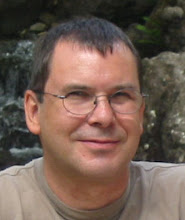Managing time and synchronization in any software is complicated. Leon Starr, a leading proponent of building executable models in UML, talked about the issues of modeling time and synchronization to the December meeting of the SDForum SAM SIG. Leon has spoken to the SAM SIG previously on executable models. This time he brought along two partners to demonstrate how the the modeling technique can be applied to a broad range of problems.
Leon started the meeting by talking through five rules for handling time and synchronization. The first and most important rule is that there is no global clock. This models real systems which may consist of many independent entities and allows for the most flexible implementation of the model on a distributed system. In practice, other rules are a consequence of this first rule.
The next rule is that that the duration of a step is unknown. The rule does not imply that any step can take forever, its purpose is to say that you cannot make assumptions about how long a step may take. In particular, you cannot expect independent steps in the model to somehow interleave themselves in some magical way. The third rule is that busy objects are never interrupted. This forces the modeller to create a responsive system by building it from many small steps so that an object is always available to handle whatever conditions that it needs to handle.
The fourth rule is that signals are never lost. This is an interesting rule as it gets to an issue at the heart of building asynchronous systems. The rule implies that there is a handshake between sender and receiver. If the receiver is not ready, the sender may be held up waiting to deliver the signal. Perhaps the signal can be queued, but then there is the problem that the queue is not big enough to handle all the queued signals. In the end you have to build a system that can naturally handle all the events thrown at it, if it is a safety critical system, or that fails gracefully if it is not.
The fifth rule is that there is no implicit order in the system, except that if one object sends signals to another object, the signals arrive in the order that they were sent. Note that I may have interpolated some of my own experience into this discussion of the rules. If you want to explore further watch this video on You-Tube and go to Leon's web site which leads to many interesting papers and discussions.
Next at the meeting, Leland Starr, younger brother of Leon, talked about a web application that he had been the lead on for his employer, TD Ameritrade. The online application is for arranging participants in online webinars. By using the UML modelling technique, he created a model that could be both used to explain how the system would worked to the business sponsors of the project and that could be executed to check that it worked as expected. Leland has a SourceForge project for his work.
Finally Andrew Mangogna talked about a very different class of applications. He builds software to control implanted medical devices like heart pacemakers. The two overriding concerns are that the medical device performs its function safely and that it runs for at least 5 years on a single battery charge. Compared to many of the applications that we hear about at the SAM SIG the implantable device applications feel like a throwback to an earlier and simpler age of computing. The applications are written in the C programming language and the code typically occupy 3 to 4 kilobytes. The program data is statically allocated and an application can use from 150 bytes to 500 bytes. Andrew also has a project on SourceForge for his work.
Subscribe to:
Post Comments (Atom)

No comments:
Post a Comment